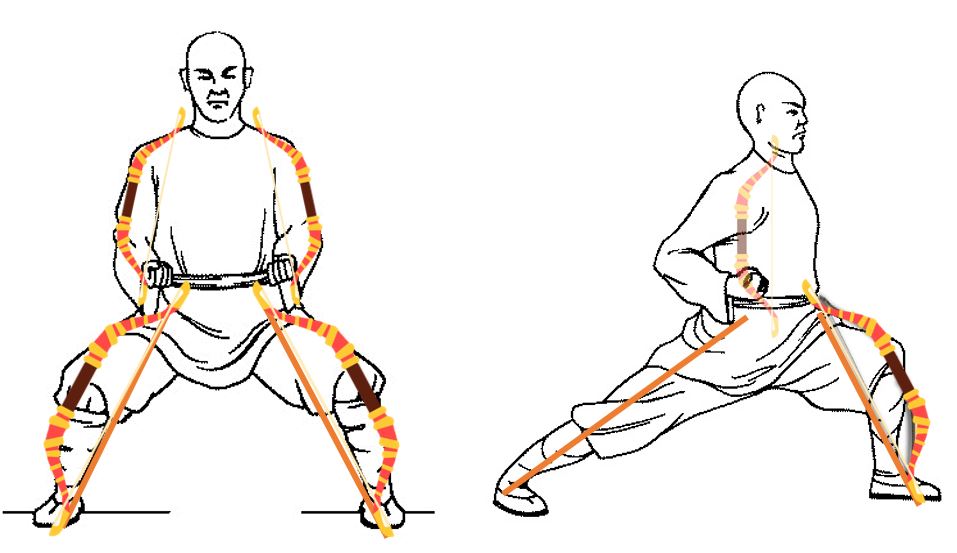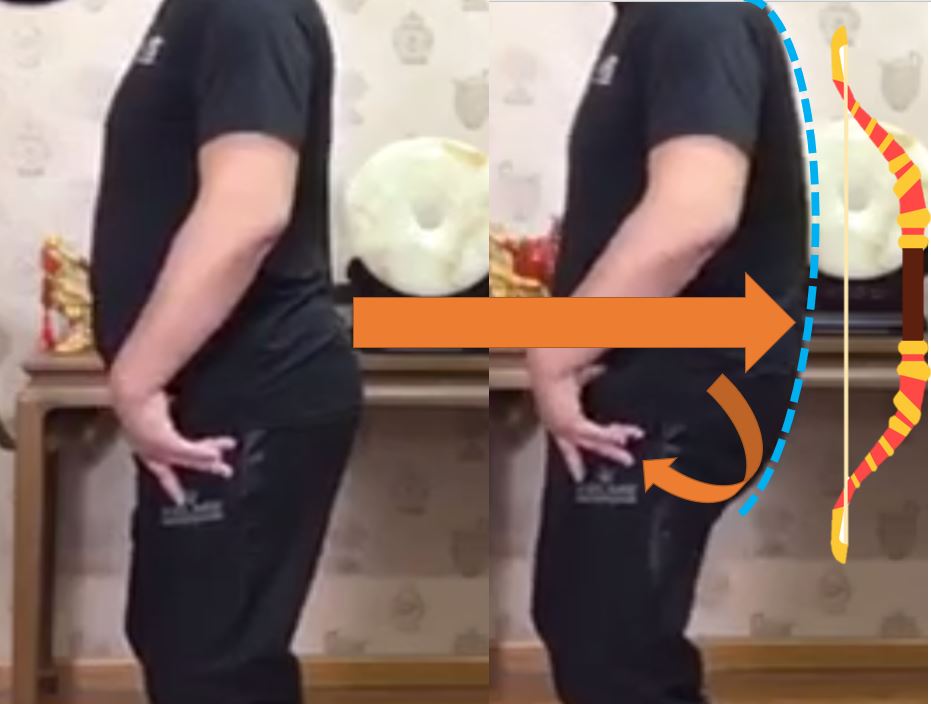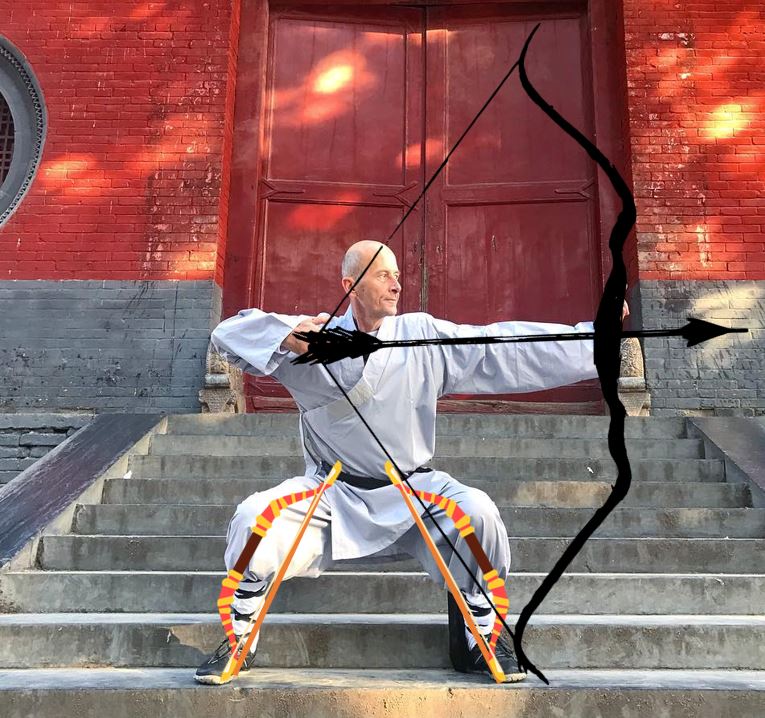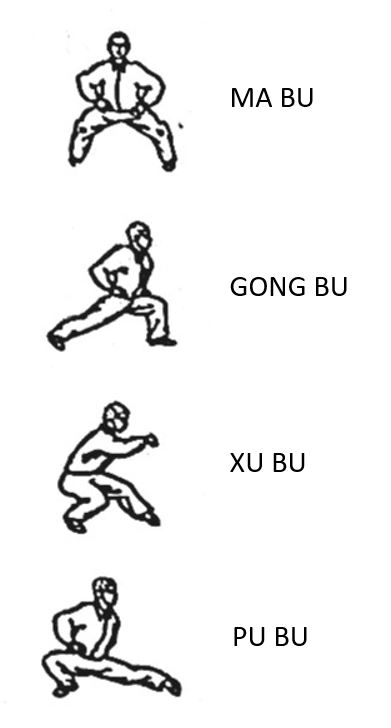Master's Note: One Body - Five Bows
In one human body, you can identify five "bows" - two in the legs, two in the arms, and one in the spine.

When it comes to "bows" in the legs, the knees act as handles, and the feet and thighs are tips. Elasticity in the knee joints is essential for a vertical jump. Therefore, elderly people with knee problems should avoid jumping movements as it can worsen their condition. In martial arts, the basic stance, such as Ma Bu (马步, mǎbù), involves bent knees, as if you were sitting on a horse. It's also called the horse stance. The Gong Bu stance (弓步, gōngbù), or bow stance, requires one knee bent at a right angle while the other leg remains straight, creating tension similar to drawing a bowstring.
As for the "bows" in the arms, the elbows are handles, and the arms and shoulders are tips. When performing movements in Wushu or Tai Chi, elbows should not be pressed or squeezed, as it can cause tension in the shoulders and negatively impact overall relaxation and strength. For example, the Ma Bu stance with palm pushing or the second stance of the Shaolin Qigong complex "Ba duan jin" are open stances that require opening the chest, shoulders, and stretching the elbows, which is beneficial for lungs training.

The most important "bow" is in the spine: lumbar vertebrae correspond to the handle, and shoulders and hips, connected to the shoulders through the sacrum, are the tips. This is the largest part of the body, connecting four limbs and capable of controlling movements of the entire body. Wushu emphasizes internal and external harmony, balance. External harmony is manifested in the coordination of movements of arms and legs, elbows and knees, shoulders and hips. Without the coordination of shoulders and hips, the rest cannot be coordinated. Therefore, it is important to relax the shoulder blades, shoulders, adjust the sacrum ("tuck the tail") and tense the lumbar vertebrae to stretch the spine, open the back, make it elastic and taut, like a bowstring. For example, when performing the Gong Bu stance with a fist strike (弓步冲拳, gōng bù chōng quán), simultaneous actions are required: turning the body with the waist, lowering the center of gravity, pressing on the thigh with the front leg, straightening the back leg, moving the arms together with the body, and moving the body forward as a whole, similar to releasing an arrow.
Watch how a cat jumps: the tail rises, the lower back tenses, the spine curves, the body lowers, and like an arrow from a bow, the cat makes a fast and powerful jump, releasing accumulated energy. A cat with a body length of just over 30 centimeters can jump to a height of over 150 centimeters. If there were competitions in the animal world, a cat would probably become the high jump champion! 👍
Join our training!
